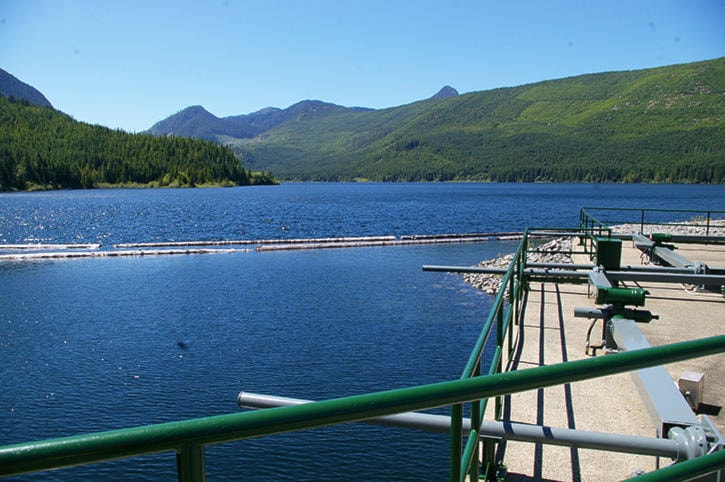Any rain this week will bring an end to what has been Nanaimo’s driest June since precipitation started being recorded here in 1892.
As of Monday, Nanaimo received just 4.3 millimetres of rain, or about 10 per cent of the average rainfall for the month.
“Much of that came last Wednesday and that was the most rain we’ve seen in a month, going back to mid May,” said Matt MacDonald, Environment Canada meteorologist.
So far, the lack of rainfall isn’t threatening Nanaimo’s water supply, although the Jump Lake Reservoir – Nanaimo’s primary water reservoir – is starting to draw down, according to Bill Sims, Nanaimo’s director of engineering and public works.
“We haven’t had much rain and all and the snow melt is pretty much gone, which is not unusual, but we started with a fairly low snowpack … we just manage these assuming there’s going to be a drought, so we start storing [water] earlier than normal, or earlier than we would have in the past,” Sims said.
The reservoir is starting to draw down a bit early, but Sims is predicting Nanaimo has ample water stores to last into fall. That’s partly due to Nanaimo’s water collection system, which is large and robust compared to those of some coastal B.C. communities that rely on smaller water collection areas and wells.
“We were blessed 50-odd years ago with the Greater Nanaimo Water District and, so that was a separate entity and they really thought in the long-term and so that’s put us in really good shape for today,” Sims said.
The other reason he expects Nanaimo will be fine through what will likely be another hot, dry summer, is that residents continue to be highly conservative with their water consumption. He estimates there are about 25,000 more people living in Nanaimo than there were in the 1990s, but water consumption remains at 1990s levels.
“That’s really helping to keep us in good shape … that’s a really good, positive message out of all of that,” Sims said.
There is hope for at least a temporary reprieve from current conditions. If Environment Canada’s weather forecast is right, Nanaimo could receive 15-25mm of rain Thursday and Friday, June 27-28, which would dash the dry spell and the potential for a record.
“Thursday and Friday this week look pretty wet, actually,” MacDonald said. “We going to see a healthy system come across the south coast … that’ll be a good boost, but still below normal.”
MacDonald checked rainfall records for Nanaimo for the year and found January has been the only near-normal month for precipitation. February received 81 per cent of normal precipitation and March only received 18 per cent of its average.
“April was not bad. It was 93 per cent and that was kind of across the province we kind of saw some good reprieve in April, but then May, again we had 32 per cent,” MacDonald said. “We had 17mm compared to the normal of 54. So, it’s not just June that was dry. It’s been several consecutive months of drier than normal.”
This week it appears the weather is starting to show the normal ‘June-uary’ pattern with a stagnant low-pressure system forming over the coast, which will drop the most rain the Nanaimo region has seen since the beginning of April.
“There is a little bit of improvement on the way, but if you take into account the longer-term record, it’s a relatively small drop in a rather empty bucket,” MacDonald said.
photos@nanaimobulletin.com
Like us on Facebook and follow us on Twitter
